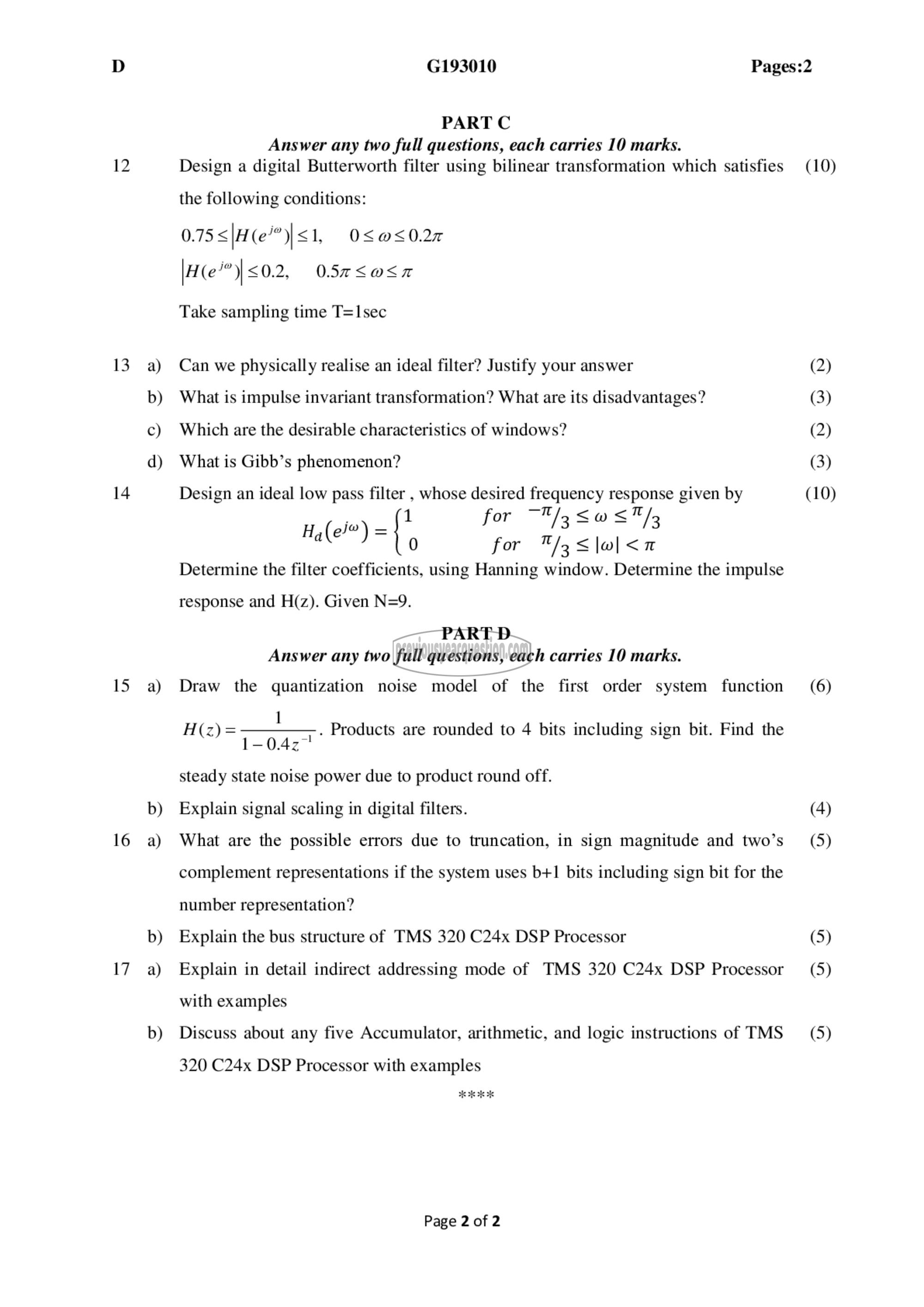APJ ABDUL KALAM TECHNOLOGICAL UNIVERSITY Previous Years Question Paper & Answer
Semester : SEMESTER 7
Subject : Digital Signal Processing
Year : 2020
Term : MARCH
Scheme : 2015 Full Time
Course Code : EE 407
Page:2
12
13
14
15
16
17
a)
b)
௦)
6)
a)
b)
a)
b)
a)
b)
G193010 Pages:2
PART ட்
Answer any two full questions, each carries 10 marks.
Design a digital Butterworth filter using bilinear transformation which satisfies
the following conditions:
0.75 < | (०४)
|H(e’”)
<], O
<0.2, 0575057
Take sampling time = 18९८
Can we physically realise an ideal filter? Justify your answer
What is impulse invariant transformation? What are its disadvantages?
Which are the desirable characteristics of windows?
What is Gibb’s phenomenon?
Design an ideal low pass filter , whose desired frequency response given by
∽ ∘⊺−∏≤∁⋃≤⊺↧
∥⊄∊∊∣∾⋟−− 1 2 /3
0 for و/7 < |७| < 7
Determine the filter coefficients, using Hanning window. Determine the impulse
response and H(z). Given N=9.
PART 0
Answer any two full questions, each carries 10 marks.
Draw the quantization noise model of the first order system function
H(z)= तात Products are rounded to 4 bits including sign bit. Find the
steady state noise power due to product round off.
Explain signal scaling in digital filters.
What are the possible errors due to truncation, in sign magnitude and two’s
complement representations if the system uses b+1 bits including sign bit for the
number representation?
Explain the bus structure of TMS 320 C24x DSP Processor
Explain in detail indirect addressing mode of TMS 320 C24x DSP Processor
with examples
Discuss about any five Accumulator, arithmetic, and logic instructions of TMS
320 C24x DSP Processor with examples
Page 2 of 2
(10)
(2)
(3)
(2)
(3)
(10)
(6)
(4)
(5)
(5)
(5)
(5)
